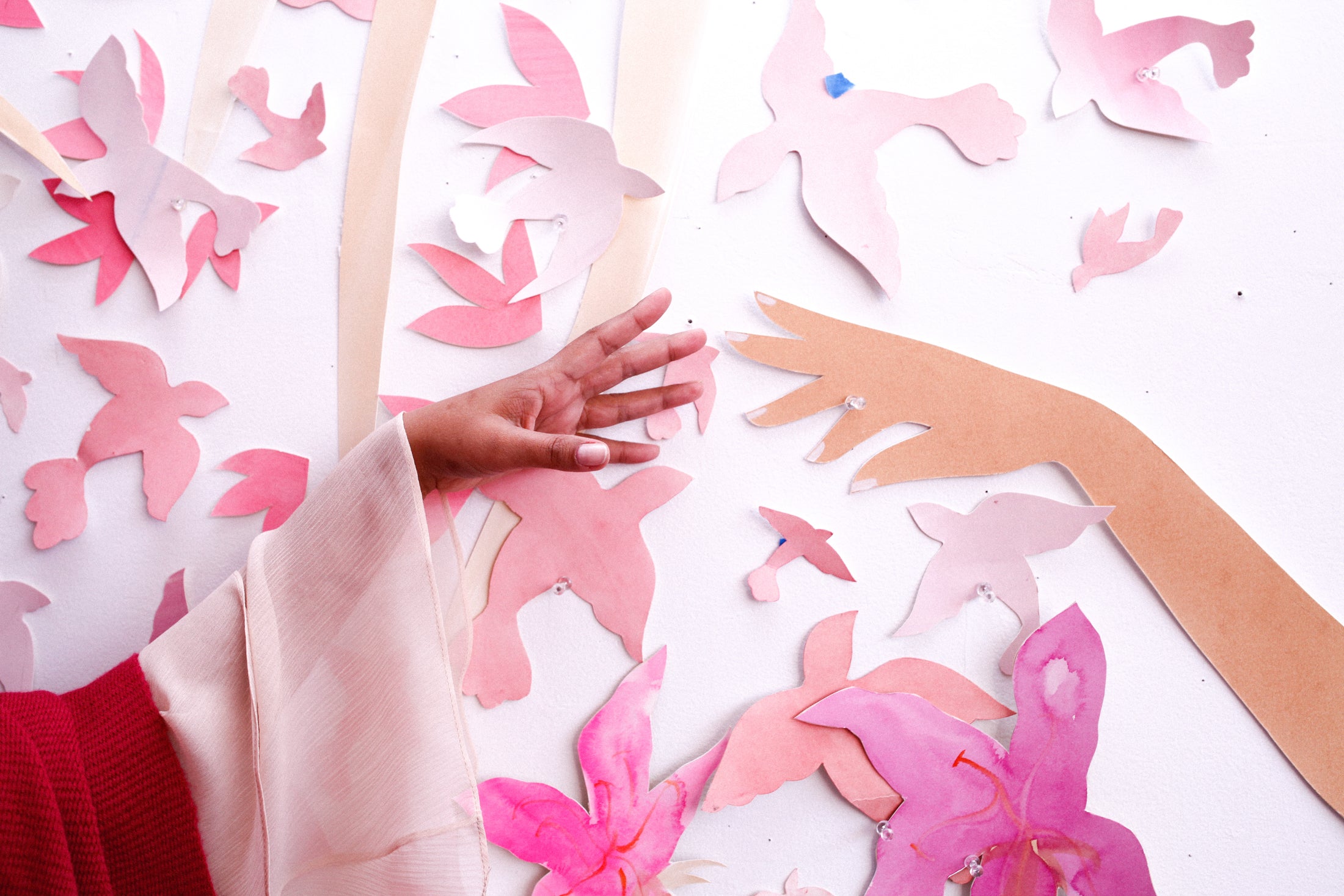#VOZWOMAN | Hiba Schahbaz
Meet our latest VOZWoman, Hiba Schahbaz, whose larger-than-life watercolors portray carefully-crafted worlds that glow with luminous color and unveil the beauty, fragility and strength of the female form.
Schahbaz was born in Karachi, Pakistan, and was trained in miniature painting at the National College of Arts in Lahore. She moved to Brooklyn in 2010 and received an MFA in painting from the Pratt Institute. Her style is rooted the Indo-Persian miniature painting technique of musawwari, and one of her favorite media is black tea.
Schahbaz’s work has been exhibited internationally in galleries and fairs including the Vienna Art Fair and PULSE NYC, and has been written about in Vice, Hyperallergic, Coveteur, Vogue, NY Magazine, and Art Critical.
We spent an afternoon in Schahbaz’s light-filled Brooklyn studio and asked her about the creative inspiration behind her prolific body of work.

Tell us about the creative background of your childhood. Who or what were some of your earliest influences?
Both of my parents were creative. My dad designed sets for television and I spent many days after school working with the set painter, exploring the costume closet, and watching TV shows or music videos being filmed. My mother was also artistic and would draw our silhouettes by candlelight to entertain us when there was no electricity. I remember admiring how good she was at coloring with us in our coloring books. She and my dad were both painters when they were younger, but settled into more traditional jobs later on in life.
Can you tell me a bit about your decision to focus on traditional miniature painting during your undergraduate studies in Pakistan? What attracted you to this genre?
I have always loved traditional Indo-Persian miniature painting. I was charmed by its rich cultural history, and the jewel-like perfection of paintings in this genre. The beauty and flow of natural forms, the colors and patterns, and its relationship with calligraphy are an integral part of Islamic art. I’m still mesmerised by how such a small painting can contain so much information.
Painting miniatures has always come naturally to me. I enjoy the disciplined, almost ritualistic, preparation of materials beforehand. The focus and dedication required to paint miniatures is like meditation for me and reflects my respect for commitment and beauty.
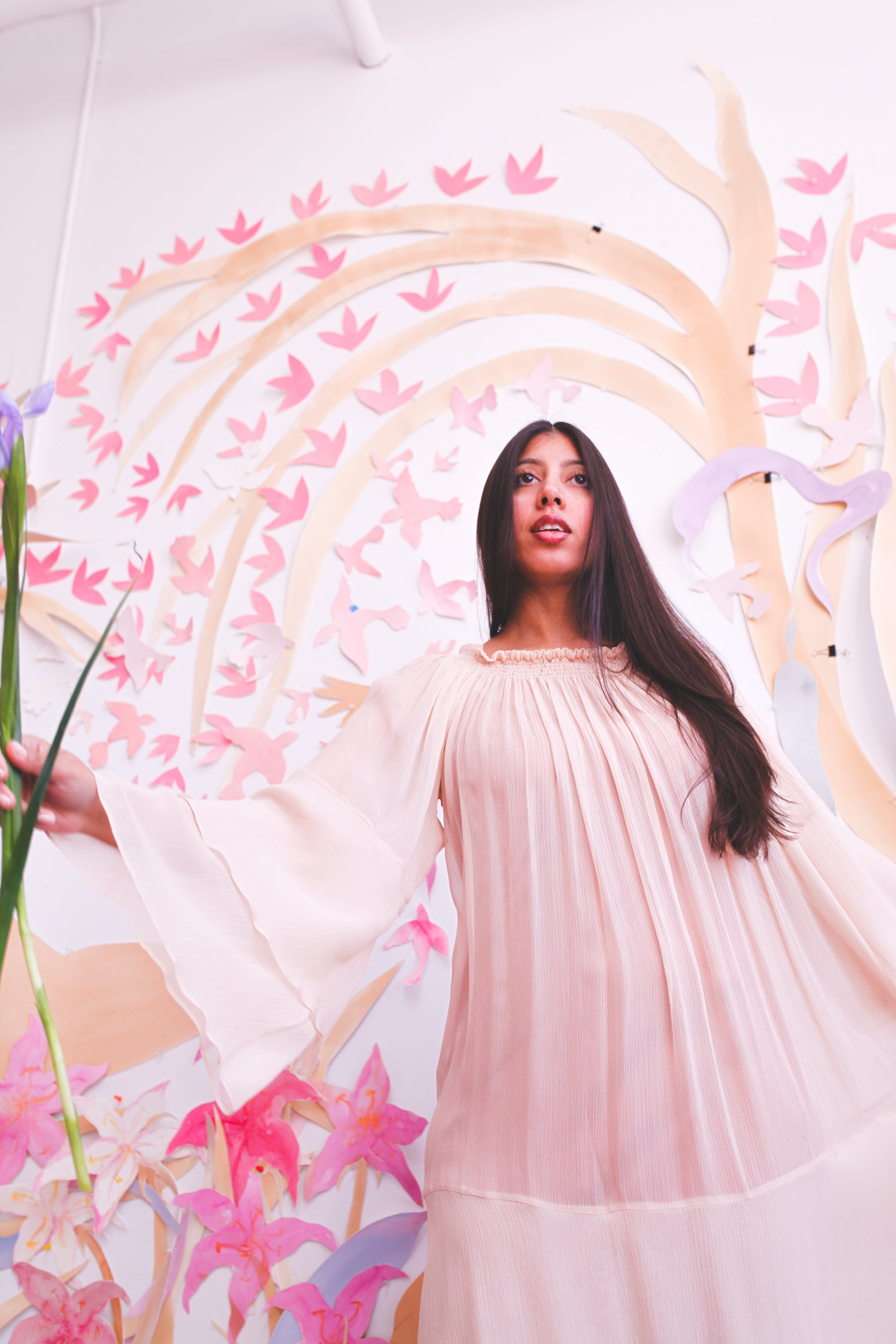
What was it like for you to move to New York City in 2010? What influence did that move have on your painting? Does this overlap with the shift in your work from painting in miniature to painting in life size?
Moving to New York was exciting and challenging in ways that I didn’t expect. I was looking for a life change and ended up in New York very much by chance. It opened me up to not only change but achieve a greater understanding of myself, my art and the world around me.
After moving here, I discovered a new world in Western painting. I looked at and experienced more art in my daily life. Being far from home and what I was used to seeing allowed me to expand and experiment with the structures of miniature painting. My work has been constantly shifting since I migrated and became a full-time artist. It is larger, more colorful, more free and unafraid to follow its own path.
You have painted yourself as Manet’s Olympia, Giorgione’s Sleeping Venus, and Jean Auguste Dominique Ingres’s Grande Odalisque. What is your inspiration for re-imagining these historical works? How does this classical visual cannon affect your message?
One of the most amazing things about living in New York is being able to see a lot of art. There are museums full of historically significant artwork and galleries that exhibit a wide range of contemporary artists. It was a profound experience to view masterpieces hanging on the walls of museums that I had only seen in books before. So I began to repaint some of these masterpieces as self portraits. In the process, I discovered that many of these paintings that I had thought were realistic had distorted the female body in order to make it more visually pleasing. I want my paintings to be about the inner lives of women, not just their outward beauty. I want the women in my paintings to own their space.
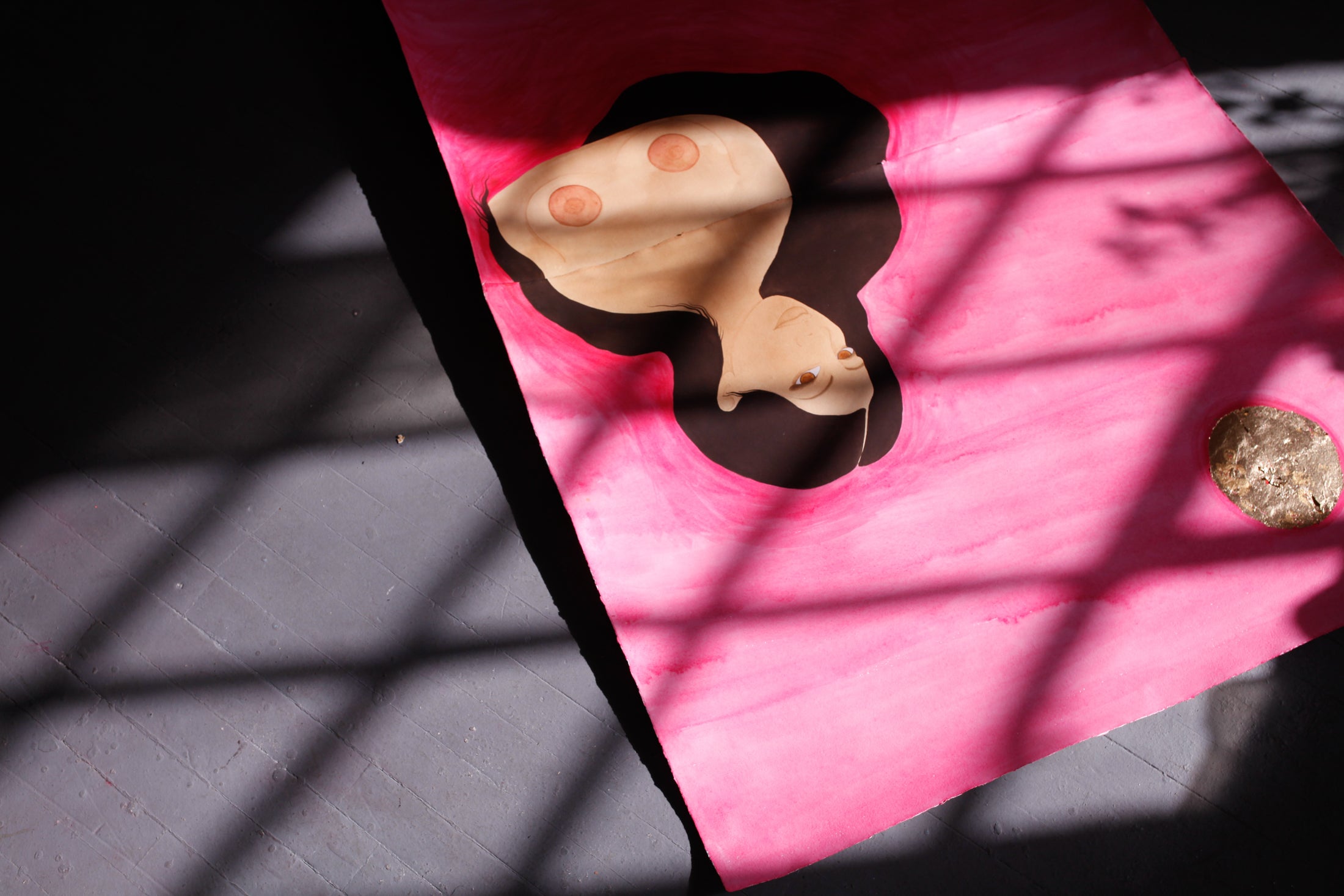
Your paintings often feel like stories. Do you have an affinity for a particular set of stories or myths?
My paintings are often personal and emotional and do have a narrative quality. I try to tell my story through my paintings, which is the story of being a woman.
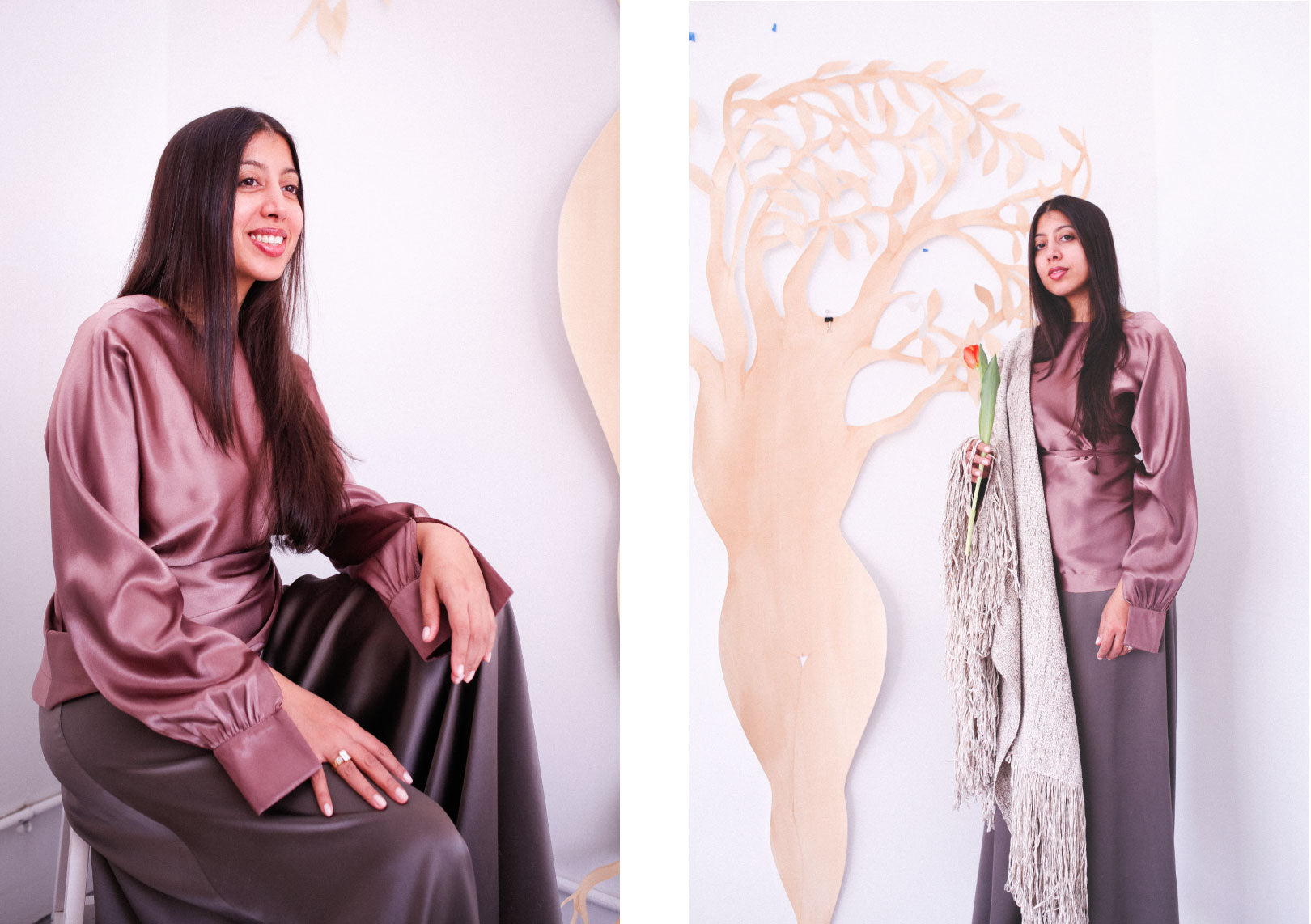
Many critics have interpreted your work as a celebration and radical reclamation of what it means to be a woman. What does it mean to you to be a woman?
I love being a woman. I grew up without feminism, so embracing myself as a woman has been an ongoing journey of self acceptance, facing my fears, opening my heart, honoring my vulnerability, and allowing myself to love. I want to develop a deeper acceptance of my feelings, emotions, and fears and not reject parts of myself when I feel imperfect. To me, being a woman is to be loving, wise, fearless, accepting, and the best person that I can possibly be. Learning how to love myself inwardly and outwardly, loving my family, my friends and the people around me, loving my surroundings and my life and my path is my goal.
Women are so powerful and have an amazing, giving, loving energy. When we are at home in our bodies and safe and vibrating at our own frequency, we can make beautiful changes in our lives and in the lives of the people around us and in the world. We have everything we need inside us; unconditional love, courage, beauty, gentleness, spirit.
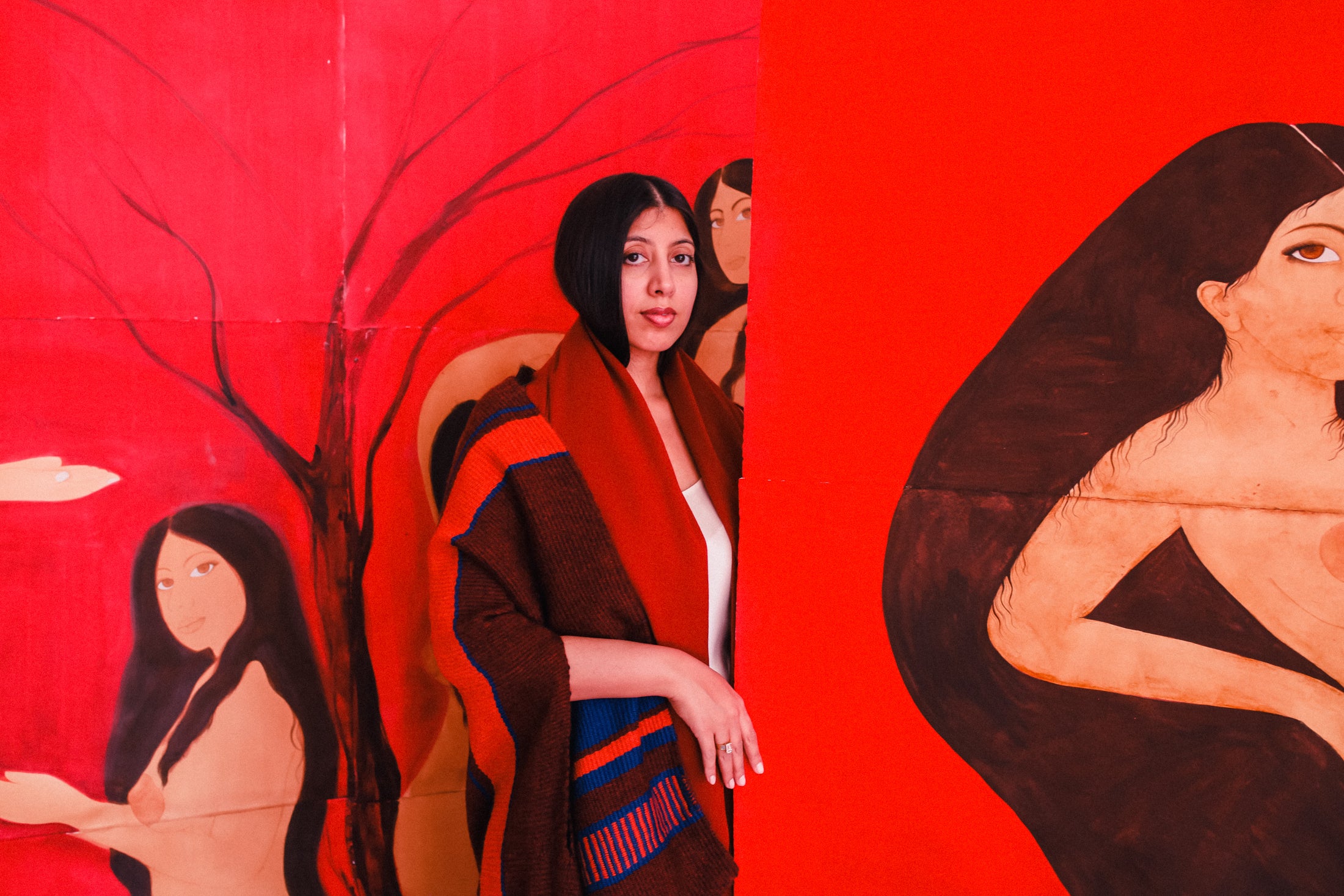
VOZ sources a lot of hand-crafted materials, especially yarn, in our supply chain. Materials are everything to us. Tell us about some of your favorite traditional materials that you use in painting.
I work with a lot of traditional materials, such as hand-made paper which I burnish to a smooth shine with a cowry shell, gouache paints, and brushes that I make myself. Most of all, I love painting with tea. I boil black tea for a long time to make a deep rich brown watercolour which I use for the skin tone of the life-size women I paint. I also love using gold leaf in my paintings, for the striking juxtaposition of pure gold and watercolor.
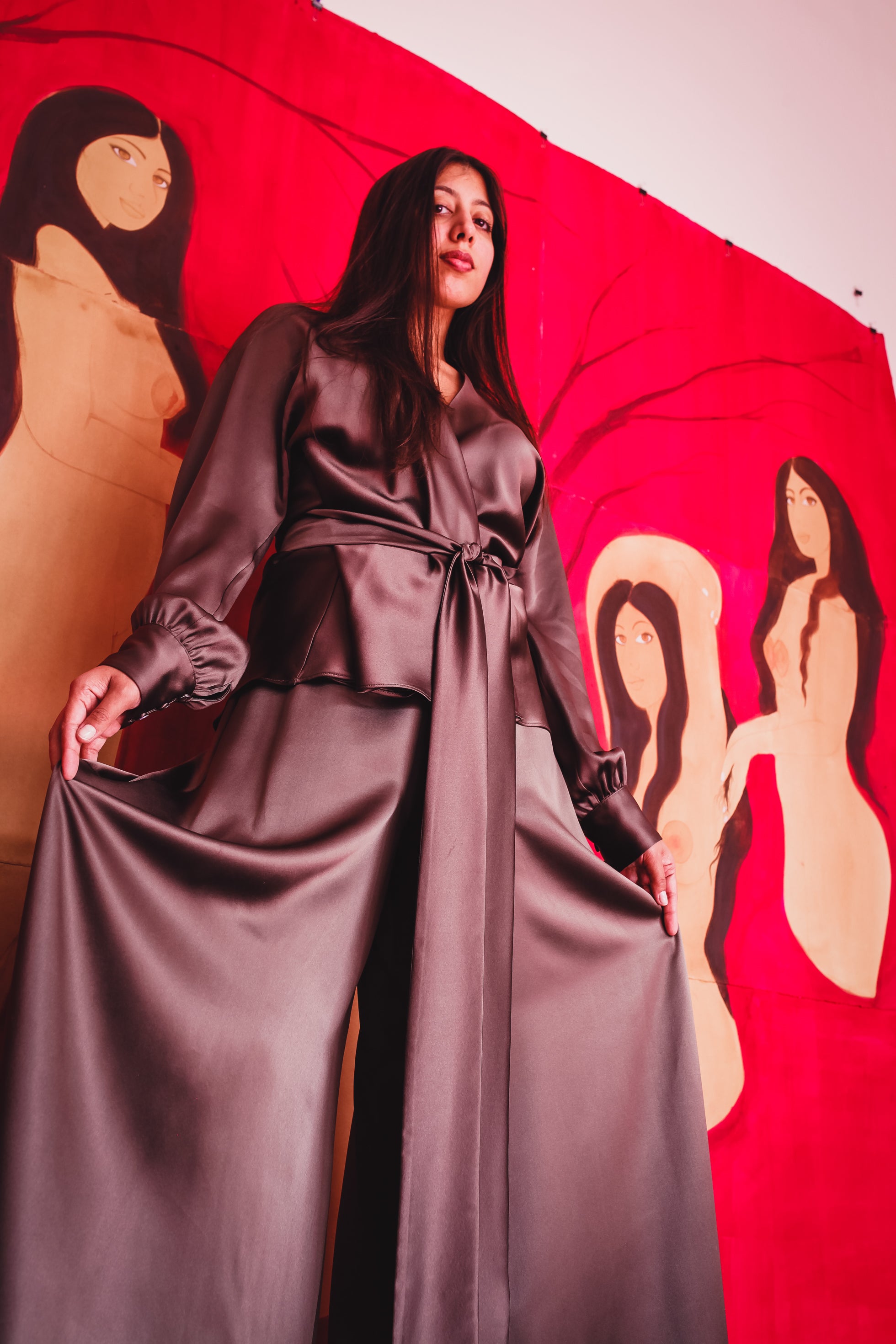
What objects, adornments, or heirlooms are sacred to you and why?
I have a few pieces of jewelry which I wear almost daily which are very precious to me. In Pakistani culture, jewelry is often passed down within the family. So almost everything I own once belonged to someone else and will be passed down by me to a family member. I wear my grandmother’s bangles and my mother-in-law’s ring almost every day. My mother’s large red shawl which is like a blanket for me is always with me. I also have a teddy bear who sleeps in my bed at night and also travels with me.
The VOZ Woman platform is here to amplify the voice of women. How do you use your voice to empower women?
I’m an artist and I paint women; in particular, brown women who are often excluded from art history and are not considered conventionally beautiful. I love it when women reach out to me to connect as women and tell me stories about their lives and how beautiful and strong my paintings make them feel. I want my voice to empower women, to nourish our lives and spirits so that we feel strong, beautiful, and free to be who we are.
Credits


